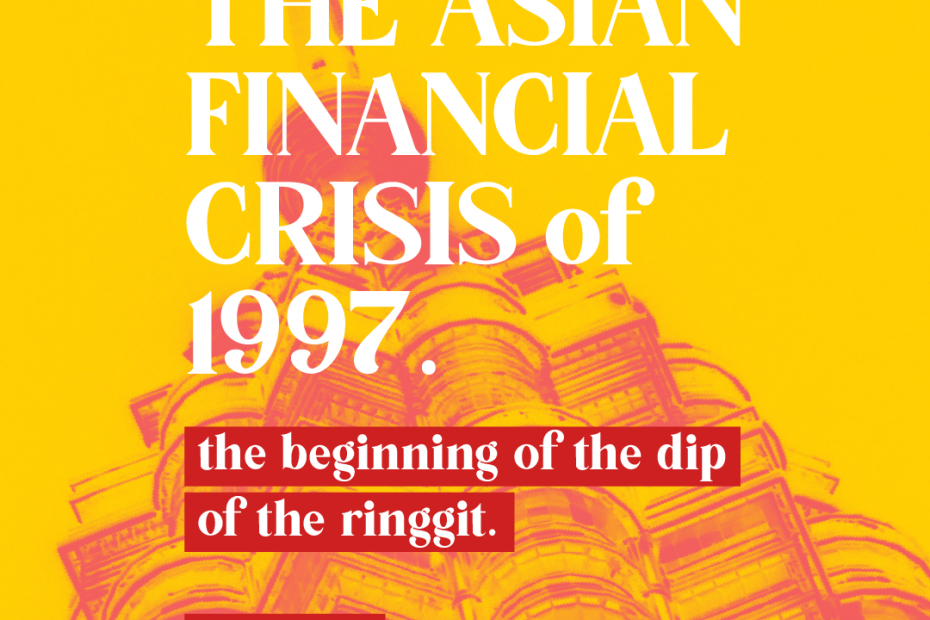Introduction
Before the 1990s, Asian countries, inclusive but not limited to South Korea, Malaysia, and Thailand, experienced rapid growth and were often referred to as the Asian Tiger Economies. Tiger Economies are essentially economies that experienced rapid growth rates, as high as over 7% on a yearly basis from the 1960s-1990s due to rapid industrialization. On a comparative note, the average global growth rates were only 2%-3% during this period. Apart from these, other Asian countries like Malaysia and Thailand experienced over 8% from the mid-80s to 90s. [1]
This, at the epicenter of growth, was Thailand’s capital Bangkok. Bangkok was pursuing to become a global financial trade center for Southeast Asia, which many other ASEAN countries pursued given its similar growth rates. Due to rapid industrialization and growth, there was an influx of capital investments from global corporations, which funded the capital growth for many Asian nations. However, it all came to an end in July 1997 when the Asian region was hit by one of the worst economic crises in decades. A collapse of the Thai Baht caused a domino effect in the region causing their currencies to come under attack followed by a rapid depreciation.
This ensued everywhere. Asian currencies dropped at rapidly increasing rates, which triggered faulting confidence from the majority of global capital investors. To put it into perspective, the Malaysian Ringgit fell from the average of 2.42 to the US Dollar in April 1997 to an all-time low of 4.88 to the US Dollar in January 1998 [2]. In a span of 9 months, the Ringgit devalued more than double its original position. Today, the Ringgit is valued at around 4.20 to the US Dollar. It has been 2 decades yet Malaysians today still experience the rippling effect of the Ringgit’s devaluation. The devastation is long-lasting and permanent. But what really caused the Asian Financial Crisis of 1997?

Causes
There are various factors at play that erupted the Asian Financial Crisis of 1997. Long story short, it has multiple incidences revolving around economics and policymaking. The Crisis itself is exceptionally complicated, with research papers still being published regarding the crisis even after 24 years. The cause and effects mentioned here would be the most simplified version for the best understanding.
It all began with the pegging of Thai’s Baht to the US Dollar. In the world of Finance, “to peg one’s currency” is to set a fixed exchange rate value of one’s currency to another. For example, in 1997, the Thai Baht was set at 25 Baht per 1 US Dollar. The problem with this is that currencies are never fixed, and are constantly fluctuating. To set the currency at a fixed value is to assume that is the average value to it. This is risky for two reasons: one, there must be constant real-time monitoring of the pegged currency, and two, pegging one’s currency to another means the power is held onto the currency. Because the That Baht pegged its currency to the US Dollar, many Southeast Asian nations followed suit, given their similar economic growth rates, which caused a huge rippling effect to Asia.
Next, the inflow of foreign capital investments due to the US’s interest rates worsened the problem. Around the 1990s, the US lowered its interest rates to stimulate its economy. Basically, lower interest rates make people want to borrow more since it is cheaper. The lower interest rates in the US made foreign capital investors to borrow money at the US, but lend money to nations with higher interest rates. Since Asian markets were at exceptional growth, their interest rates were higher, which caused a massive influx of foreign capital investments. Such investments pushed Asia’s growth capability (because more local companies could get money to start projects to improve the country), but it also created a bubble. A bubble appears when people are blinded by profitable decisions, that their assumption of the truth becomes true. So, the capital was invested into bound-to-fail corporations that weren’t projected to be profitable but were lent money just because. As said, the crucial factor was the financial side of the moral hazard problem, which was leading national banks to borrow excessively abroad and lending excessively at home. [3] When the US increased its interest rates, it was more expensive to borrow in the US, so many foreign capital investors pulled out their loans, which meant that Asian companies receiving the loans were in instant debt. Because they weren’t sustainable, most companies went bankrupt, which just caused an instant deficit of Asia’s economy.
Finally, the significant reduction of foreign reserves of Asian nations sent a shockwave for the crisis. Years of rapid domestic credit growth and unsatisfactory oversight resulted in a significant build-up of financial leverage and doubtful loans. Failing domestic economies and real estate markets added to the risks and led to increased reliance on foreign savings, reflected in mounting current account deficits and a build-up in external debt. Heavy foreign borrowing corporations and banks to significant exchange rate and funding risks—risks that had been masked by longstanding currency pegs. In order to sustain such a high peg, Asian banks had to deplete their foreign reserves, but because the peg was unsustainable, Asian banks had no way out to sustain their financial standing. When the pegs proved unsustainable, firms saw sharp increases in the local currency value of their external debts, leading many into distress and even insolvency. [4] In fact, The USD/THB exchange rate subsequently rose from 25 baht to 1 USD to as high as 56 baht to 1 USD. [5] That meant that someone who held 2500 baht just went from 100USD to 50USD in months, which was why many foreign investors wanted a way out and exchanged their currencies back to the US Dollar.
Conclusion
In the end, years of rapid growth blinded Asian policymakers in ensuring that it was sustainable to peg their currency to another, and the rapid growth caused an assumption that all local economies were experiencing growth, when in fact, they were at huge losses. The lack of supervision and financial institutions that monitor such influx of capital inflow shocked the financial markets of Asia. Blinded by success, our leaders led our country’s currency to demise.
But many Asian nations took the most common route: an IMF Loan. Malaysia did not. This was the infamous stance and decision made by our Fourth PM: Mahathir Mohammad. What exactly did he do? Why did he decide not to take the loan? Was that the best decision for Malaysia? Was it all for Malaysia, or were there personal reasons? If it was the best decision, why are we, where we are right now? We’ll take a look at Mahathir’s approach in the next writing.
- https://www.flymalaysia.org/asian-financial-crisis-1997-explained/
- http://www.ide.go.jp/library/English/Publish/Periodicals/De/pdf/99_04_03.pdf
- https://www.newyorkfed.org/medialibrary/media/research/economists/pesenti/whatjapwor.pdf
- https://www.federalreservehistory.org/essays/asian-financial-crisis
- https://corporatefinanceinstitute.com/resources/knowledge/finance/thai-baht-thb/
Living in a small city in Wisconsin, Nabhan spends his time learning and understanding the differences between the US and home. He hopes to understand America, so he can improve his comprehension of Malaysia.


Good job!!
insightful Article